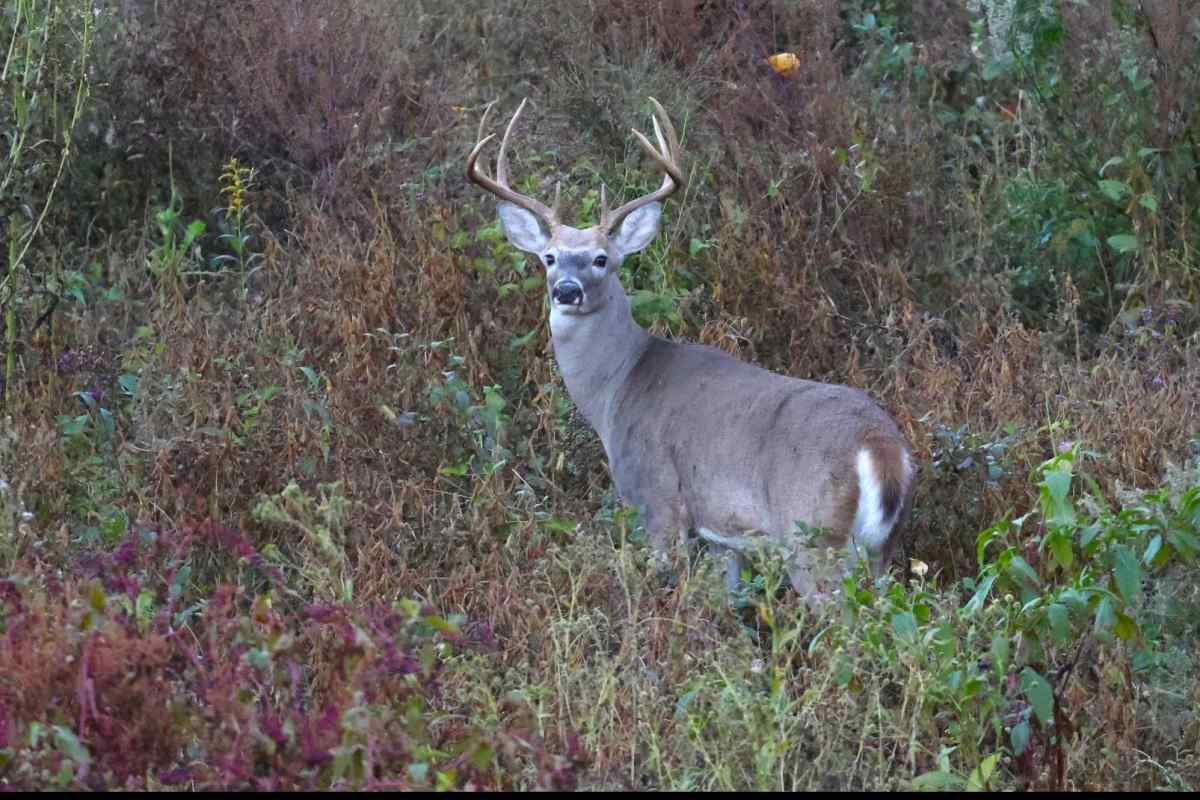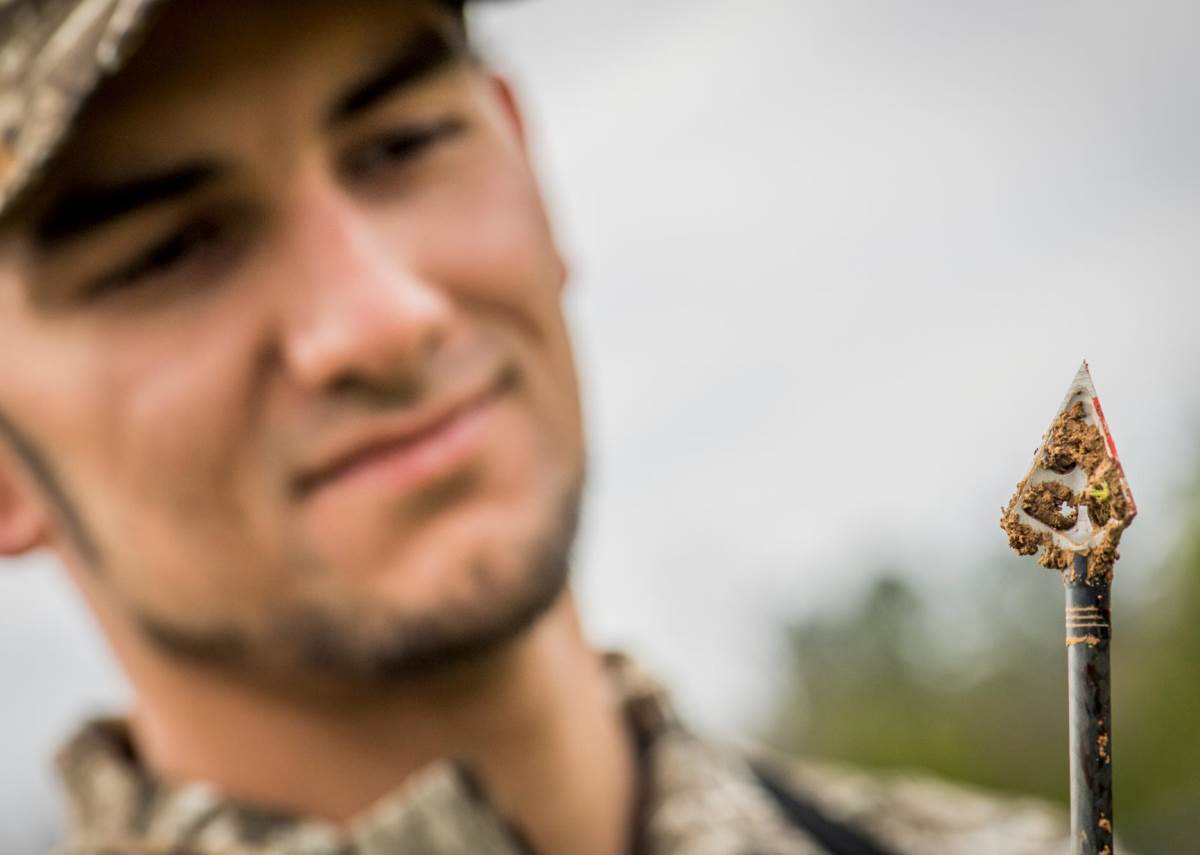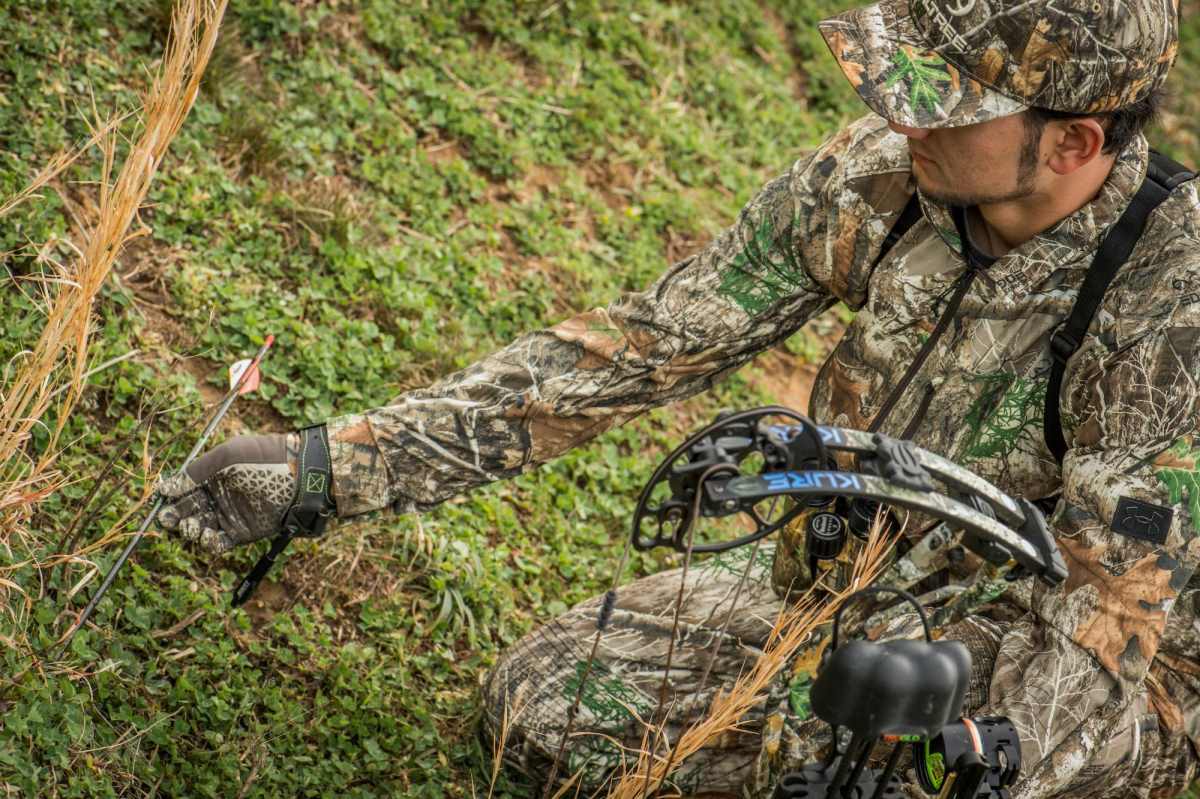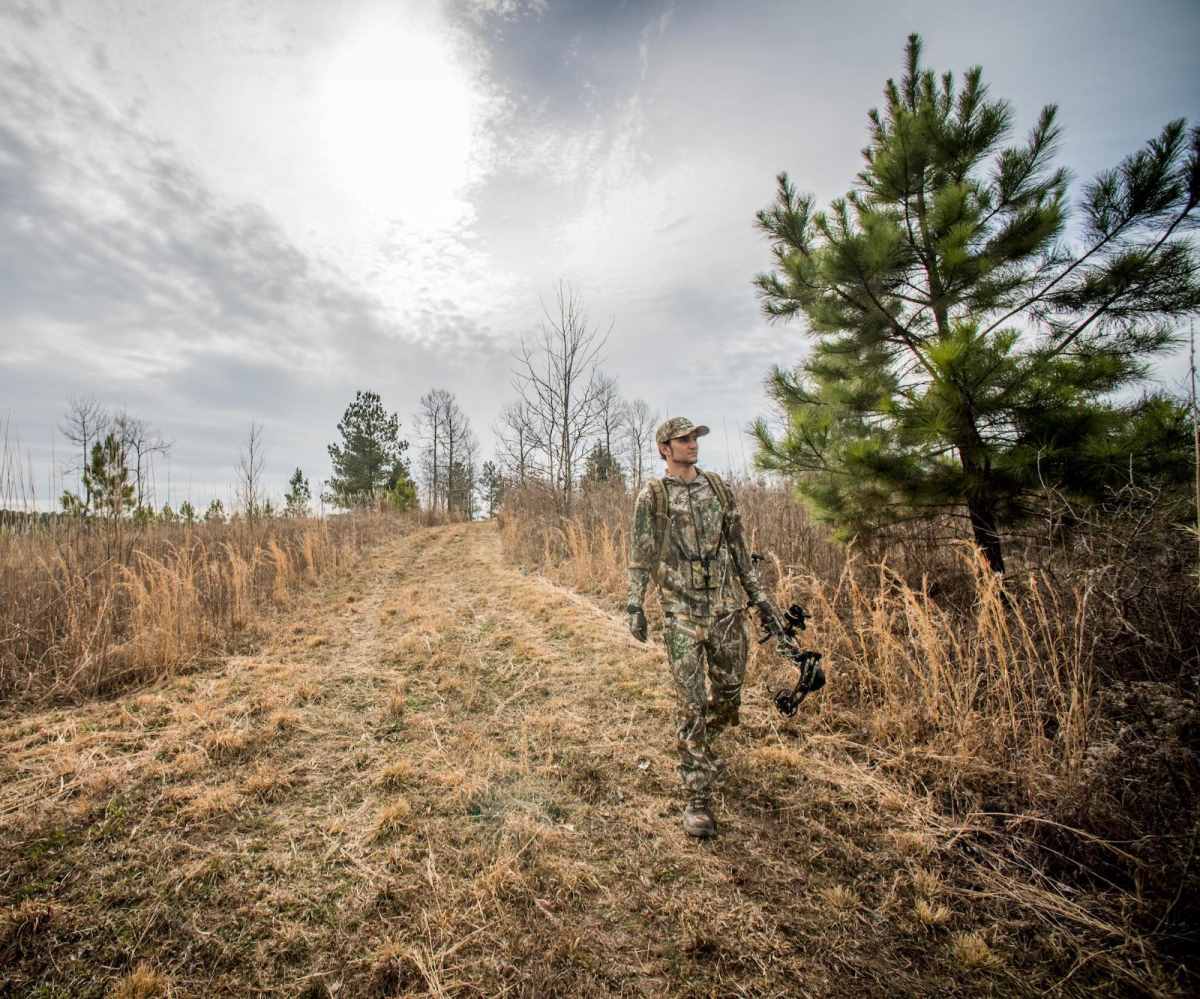
Public-land deer hunting is all the rage. Deer hunters are marching afield with fire in their bellies and determination in their hearts. Hunters are forsaking pristine private properties in search of challenging hunts on ground that’s open to all.
Ok, that latter part of that is a bit exaggeratory, even so, public land certainly seems more popular than it once was. And for those hoping to tackle the adventure, perhaps consider these five public-land deer hunts this season.

Indiana: Hoosier National Forest
Indiana is one of the nation’s biggest sleeper states, especially for deer hunting. Naturally, Hoosier National Forest is one of the most undervalued public-land hunting destinations east of the Mississippi River. It’s the largest block of public land in the state and offers incredible hunting opportunities. It spans more than 200,000 acres of huntable lands.
“There are many northern counties known for producing large bucks, but we see big deer coming from across the state,” said Moriah Boggess, deer biologist with the Indiana DNR. “The less-known counties are significantly underrated and have great trophy potential. Southern Indiana should see older deer in the coming years as this part of the state recovers from EHD in 2019 and many of the deer that survived that outbreak have immunity to the disease.”
Here’s what you should know.
Competition: In a state that is 96% private land, you can bet available public lands receive hunting pressure. That said, per reports, the competition on the Hoosier National Forest is rated as moderate. However, given its vast size, there are plenty of places for hunters to get away from the crowds. Find small, overlooked pockets for better hunting opportunities.
Location: The Hoosier National Forest is in south central Indiana. It runs north-to-south and stretches through nine different counties, starting near Bloomington, but including counties such as Crawford, Jackson, Lawrence, Monroe, Orange and others, and ends in Perry County along the Ohio River. This part of the state is known for top-end whitetails.
Access: The Hoosier National Forest is very large, and the total number of access points and parking areas are very abundant throughout it. That said, abundant access can be found near IN 145, IN 37, IN 62, IN 66, IN 70, and numerous other highways and county roads.
Habitat, Terrain, and Topography: The Hoosier National Forest is comprised mostly of hardwood forests, mixed with creek, stream and river bottoms. It harbors a diverse mix of tree species that creates a rich forest ecosystem. Given that it’s a National Forest, it will not have a lot of timber stand improvement (TSI) used within its borders. Therefore, much of the landscape has old growth, and does not consist of early successional habitat, which wildlife needs. That said, it can be found in areas where natural disturbance occurs. It just takes effort to find these areas.
The whitetail is certainly the most popular game animal to hunt in the Hoosier National Forest. Deer are rather abundant throughout the area, and hunter success rates tend to be quite positive. According to available data, in 2019, 953 deer were taken in Hoosier National Forest. Of that number, 411 were antlered, 443 were antlerless and 99 were button bucks. That season, a total of 8,246 deer were taken on public lands statewide. The next year, in 2020, the Hoosier National Forest accounted for 15.5% of the state’s total deer taken on public lands. Approximately 559 were antlered and 556 were antlerless, for a total of 1,115. The total number of deer killed per square mile is generally around 3.5.
Finding deer in such expansive areas can seem challenging. However, those who focus on edge cover tend to find the best hunting. Along waterways, such as creeks, streams, rivers and lakes offer great hunting opportunities, too. Regardless of the specific pursuit, those who have the best luck tend to focus on remote walk-in areas. More hunters tend to congregate closer to the easily accessible lands, so keep that in mind when planning your next outing. You can find plenty of ground that’s away from other hunters. It might just take some effort to find your own slice of Hoosier heaven.

Kansas: The Flint Hills National Wildlife Refuge
With only 300,000 acres of public land, Kansas isn’t the king of the open-to-all hunting lifestyle. That said, there are approximately 1 million acres of private lands that are open to hunting. But of the 300,000 that is truly public by deed, some of it holds good deer hunting opportunities. It just takes some work to find it.
“Kansas has very little public land available to hunters, but the KDWP managers on those public lands do an outstanding job,” said Levi Jaster, big-game program coordinator for the Kansas Department of Wildlife, Parks, and Tourism. “Typically, our public lands have higher deer numbers than the DMU they occur in, but they also have substantially higher hunting pressure, too. The best thing a hunter can do that wants to hunt public land in Kansas is research what properties are available in the DMUs they are hunting in and try to find those overlooked spots.”
Hunters who work hard might just find such a place on the Flint Hills National Wildlife Refuge. Established in 1966, it was originally part of the U.S. Army Corps of Engineers’ John Redmond Reservoir flood control project. Today, it’s a solid hunting destination for numerous types of hunters and spans nearly 18,500 acres.
Competition: Those who arrive at the Flint Hills National Wildlife Refuge might see other hunters. Competition, as with virtually all pieces of public land, will be present. That said, work hard and it’s possible to find an area to yourself. That’s just part of public land hunting. These days, very little of it goes unhunted, especially in Kansas.
Location: The Flint Hills National Wildlife Refuge is located northeast of Hartford, Kansas. It stretches across parts of the fabled Coffey and Lyon counties.
Access: Access and parking are abundant. Designated parking abounds. However, there is significant access from SH 130, as well as other paved and graveled roads, such as roads W, 110, Blackbird Lane, 17th Lane, 19th Lane, Indian Hill Loop, and more. Consult the refuge map to determine areas that are off limits.
Habitat, Terrain, and Topography: The Flint Hills National Wildlife Refuge is in the Neosho River Valley. Here, you’ll find gently rolling hills with a refreshing mix of habitat types. It has a variety of successional habitat stages.
This region is mostly prairie with native grasses mixed with some timber. Overall, in addition to prairie grasslands, it also has some bottomland timber (hardwoods), riparian areas, crop ground, and wetlands. According to the Fish and Wildlife Service, in low-lying areas, you’ll commonly find buttonbush, cordgrass, eastern grama grass, common ironweed, and more. In upland areas, grasses mostly consist of big bluestem, Indiangrass, switchgrass, wildflowers, and more. In the woodlands, tree species are generally confined to American elm, black walnut, bur oak, green ash, hackberry, pecan, and more. Several creeks and rivers wind throughout this property, including Eagle Creek, Fourmile Creek, Lebo Creek, Neosho River, and more.
Whitetails are likely the most common game animal hunted at the Flint Hills National Wildlife Refuge. Deer are rather abundant throughout the refuge. Hunters commonly find success here.
The area is also known for its incredible upland and waterfowl hunting. Hunters commonly find success here, especially when hunting quail. The area harbors a good population of birds. It’s often frequented by ducks and geese during the fall migration. The area ponds and shallow marshes offer an incredible draw to passing birds. American wigeon, blue-winged teal, green-winged teal, mallards, northern pintail, and occasionally other duck species pass through the region. So do both Canada geese and snow geese.

Kentucky: Peabody Wildlife Management Area
Kentucky hunters have likely heard of the Peabody Wildlife Management Area (WMA). It’s located in western Kentucky, and covers approximately 45,700 acres. It offers an abundance of public-land hunting opportunities.
Competition: The Peabody WMA receives moderate hunting pressure, sometimes higher during gun seasons. It also receives a moderate volume of attention on hunting forums. That said, during bow seasons, outdoorsmen and women deal with low to low-moderate hunting pressure.
Location: Located in west central Kentucky, it’s closest to the city of Rockport, around U.S. 62 and KY 70 between Central City and Beaver Dam. It spans mostly within the borders of Hopkins, Ohio, and Muhlenberg counties.
Access: There are numerous access points along KY 70 and U.S. 62. Additional access exists along KY 369, KY 176, KY 269, etc. Those who like to get well away from roads won’t check that box as easily at Peabody. Nearly 70% of it is within 0.25 miles of a road, 20% is within 0.5 miles of a road, 7% is within 0.75 miles of a road, and less than 3% is a mile or more from a road.
Habitat, Terrain and Topography: Peabody WMA is mostly reclaimed coal mining territory. Elevation change exists throughout the area, but the minimum is 324 feet and maximum is 654 feet. According to the Kentucky Department of Fish and Wildlife Resources (KDFWR), area habitat consists of 68.28% forest, 15.25% open land, 11.98% wetland, and 4.47% open water. The vegetation is dominated by timberland and grassland areas. A mix of hardwoods and pine trees abound on the landscape. While some younger timber exists, some of it is aging due to minimal timber stand improvement (TSI) work. Currently, according to LandRater, the age class of timber is heavily shifted toward trees that are 20-50 years old. Mature (50-plus years old) and young (less than 20 years old) tree growth is less common and comprises only approximately 10% of the forest makeup.
Plenty of water sources exist on the landscape. It has a mix of ponds, lakes, streams and creeks. Wild game has plenty of places to drink. Hunters can take advantage of these areas, too. Food sources are abundant as well. A good volume of browse exists throughout the area. The acorn potential is excellent, too, barring the occurrence of a mast crop failure.
This WMA is very popular for deer hunting. Its population is rated as “good.” Those who are largely hunting for meat shouldn’t be disappointed. Bowhunters commonly experience encounters with bucks ranging from 1 ½ to 3 ½ years old. Bucks that are 4 ½-plus years old are harder to come by, but aren’t completely rare, especially earlier in the season.
A look at the Peabody WMA map shows an abundance of variety and opportunity. That said, it shows that some areas are restricted, leased, have active mining, and pose other reasonings for being off limits. Make sure you download the appropriate maps, and use hunting-based apps, such as HuntStand, to remain within the associated public property lines.

Ohio: Shawnee State Forest
Not to be confused with Shawnee National Forest that’s located in Illinois (https://www.fs.usda.gov/activity/shawnee/recreation/hunting), Ohio’s Shawnee State Forest is an excellent hunting destination. Located in the foothills of the Appalachian Mountains, it was given the nickname of “The Little Smokies.” It was named after the Shawnee tribe, as these used to be the tribe’s primary hunting grounds. Today, it’s the largest public forest area in the Buckeye State, and it is an excellent destination for whitetails, wild turkeys, ruffed grouse, squirrels and other small game.
It was originally founded in 1922 with the purchase of 5,000 acres. Today, it’s 63,000 acres of great wildlife habitat. Fortunately for hunters, it’s open to the public in the form of a state forest. Thanks to great work by the Ohio Department of Natural Resources (ODNR), the outlook is promising.
The state recently put in place new restrictions in hopes of improving public land deer hunting. “From all indications, the public-land restrictions had the desired effect on the harvest, which should translate to some additional opportunities this fall — both antlered as well as antlerless,” said Michael Tonkovich, a wildlife biologist with the ODNR. “I’m cautiously optimistic that we will see some nice deer taken from public lands this year, but more likely over the next couple of seasons.”
Competition: While the competition is moderate, and sometimes high, most hunters can find a piece of ground to themselves. It sometimes takes effort to find these unpressured pockets, especially during firearms seasons, but it’s certainly possible to do. You get out of this hunt what you put into it.
Location: Located in Adams and Scioto counties, and close to the banks of the Ohio River, this southern Ohio destination is a great area that’s full of big whitetails and other game. The administrative office is in West Portsmouth, Ohio.
Access: Access and parking is both abundant and spread out. Much of the park can be accessed from highways 52 along the river, and 125, which cuts through the heart of the state forest. The Ohio DNR is regularly doing what it can to increase land access, too. That includes a recent expansion of the Shawnee State Forest by another 1,252 acres, which resulted from a successful land acquisition.
Habitat, Terrain, and Topography: Given its location in the foothills of the mountains, the topography is full of rolling hills. This can be difficult terrain to navigate, especially for those who have limited physical capabilities.
That said, for those who are capable and willing to tackle this rugged terrain, they just might get rewarded with a great hunting adventure. While many areas of the Shawnee are mature timber, other areas are thick and overgrown, which is just the habitat type that most game animals like. This was the result of both responsible timber harvests, and a massive ice storm in 2003, which downed many trees. While that seems bad on the surface, it was just what wildlife populations needed to boom. Today, hunters are experiencing the benefits of natural disturbance of this massive forest. Common tree species include buckeye, oaks, hickories, sassafras, maples, poplar and many more.
There are also numerous lakes in the area, including Bear, Wolfden, Churn Creek, McBride, Pond Creek and more. These and many different creeks and streams provide an abundance of water and habitat for wildlife.
The most popular game animal pursued in the Shawnee is the white-tailed deer. It certainly has a low to moderate deer density. But what it lacks in numbers it oftentimes makes up for in quality. It has some big bucks, too. Nearly a decade ago, this giant, 185-inch whitetail was taken close to the border of the state forest. Other monster bucks have been taken inside the forest even before and since then.

Tennessee: Cherokee National Forest
Those who hunt in Tennessee have likely heard of the Cherokee National Forest. It spans about 650,000 acres, and is the largest compilation of public land in the Volunteer state. It was founded in 1936 when President Franklin D. Roosevelt decided to preserve land, wildlife, and hunting opportunities in that area. Today, through a joint agreement between the Forest Service and Tennessee Wildlife Resources Agency (TWRA), it’s ultimately overseen and managed as a wildlife management area (WMA), and much of it is open to public hunting. It’s split into the North and South Cherokee WMAs.
Competition: As with most public lands, competition is present. Hunters are on the landscape. That said, given the vast amount of acreage, your odds of bumping into other hunters decreases greatly, especially compared to smaller tracts of public lands. Here, it’s much easier to find areas away from the hotspots of hunting pressure.
Location: The Cherokee National Forest is in eastern Tennessee along the Appalachian Mountains. The North Cherokee Starts around I40 and stretches northeastward toward Virginia and North Carolina. It’s also intersected by I26. The South Cherokee starts around Chilhowee Lake, highway 115, and highway 129, and extends southwestward to the state line. Highway 411 doesn’t border the property but parallels its western flank.
Access: Access and parking is abundant throughout the North and South Cherokee. Finding these isn’t difficult. That said, those who plan to hunt the North Cherokee will find great access from highways 25, 107, 143, 361, 362, 391, 395, 421 and many other highways and county roads. The South Cherokee has good access from highways 30, 64, 68, 115, 129, 165, 315 and other state and county roads.
Habitat, Terrain and Topography: This area is vast, and is largely dominated by foothills and mountains. Most of this area is covered by timber, mixed with a limited amount of open areas. Streams, creeks, and other bodies of water flow through the area as well, including numerous whitewater rivers.
Some who see it might be intimidated by the mountainous terrain. It can take a physically fit hunter to be effective and cover the necessary ground. Start getting in shape prior to hunting these areas.
The Cherokee National Forest is a popular hunting destination. But this area is commonly visited for its deer hunting. The whitetail population density isn’t high, though. Mountainous terrain isn’t known for high deer numbers. That said, this is vast, rugged country, and the deer that do live here can get old. This translates to big bucks. Once you find the deer, the deer hunting can be good. Black bears are moderately common throughout the area.
Also, pay close attention to property boundaries. There are many private lands mixed within national forest areas. Keep a close watch on where you are, and where you’re supposed to be. Other common questions and concerns are addressed here.








